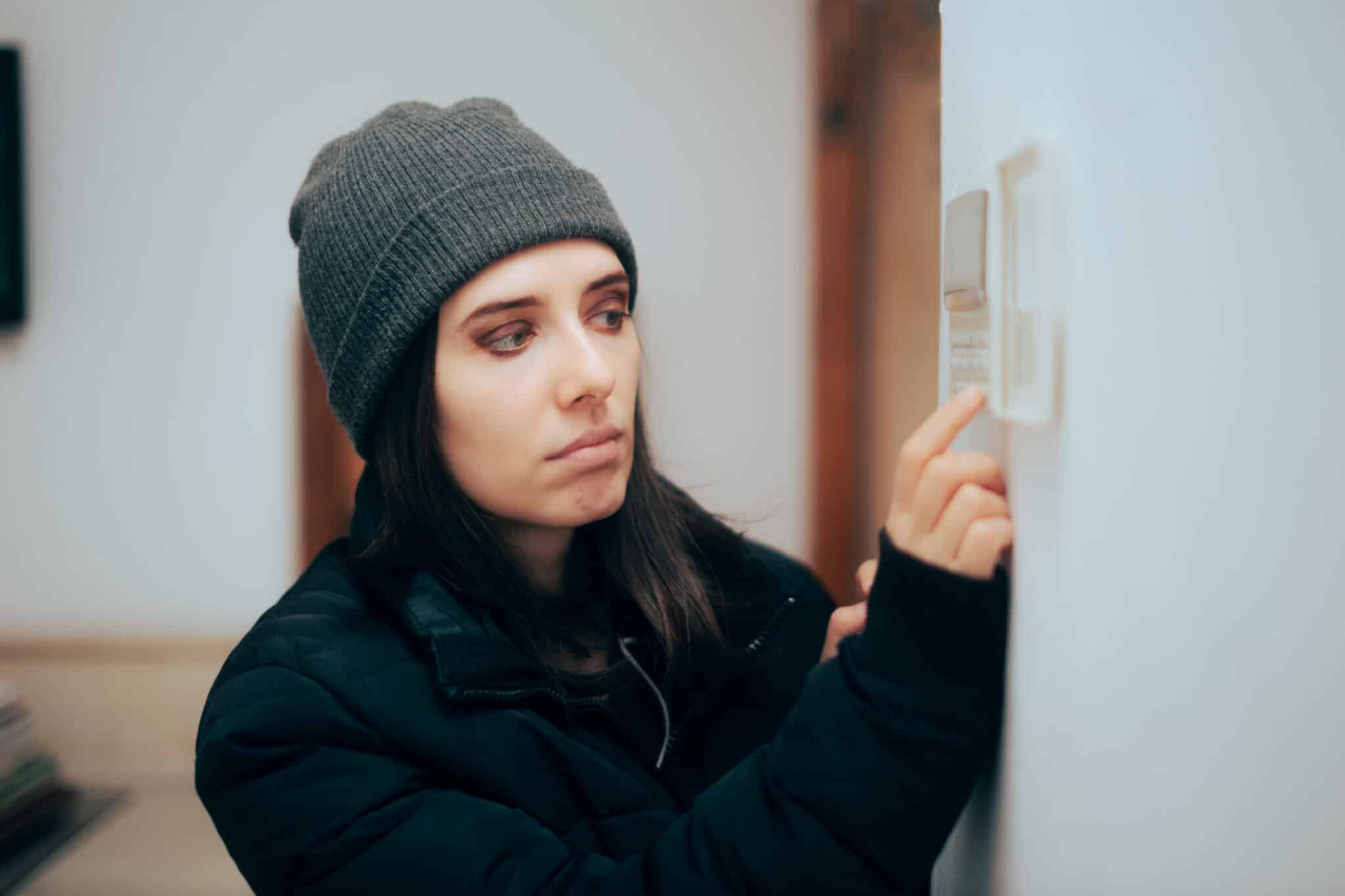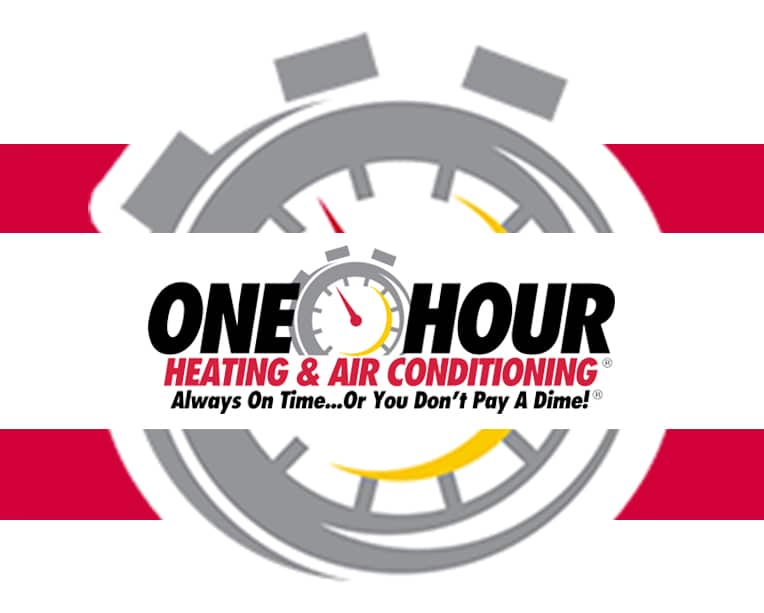When temperatures drop, a reliable heating system is essential for comfort and safety. However, heating problems can arise unexpectedly, leaving homeowners frustrated and uncomfortable. Issues like uneven heating, thermostat malfunctions, or a furnace that blows cold air can lead to higher energy bills and costly repairs if left unaddressed. Even minor inefficiencies in a heating system can cause it to work harder than necessary, increasing wear and tear over time.
A well-maintained heating system not only provides consistent warmth but also improves indoor air quality and energy efficiency. Regular inspections and timely repairs can prevent small problems from escalating into expensive breakdowns. That’s why recognizing the warning signs of heating issues is crucial, addressing them early can save both time and money.
At One Hour Heating & Air Conditioning San Diego, we understand how important it is to keep your home warm and energy-efficient. Our expert HVAC technicians diagnose and fix heating problems quickly and effectively. Whether it’s a clogged air filter, an ignition issue, or ductwork complications, professional service ensures your system runs smoothly throughout the season.
In this guide, we’ll explore six of the most common heating problems and explain how experts handle them. Understanding these issues can help you recognize when it’s time to call in the professionals and ensure your heating system operates efficiently when you need it most.
Clogged or Dirty Air Filters
One of the most common heating problems homeowners face is a clogged or dirty air filter. Air filters are designed to trap dust, pet dander, and other airborne particles, preventing them from entering the heating system. However, over time, these filters can become clogged, restricting airflow and reducing the system’s efficiency.
When airflow is obstructed, the heating system has to work harder to circulate warm air throughout the home. This not only leads to higher energy bills but also puts extra strain on the system’s components. In some cases, a dirty filter can cause overheating, leading the furnace to shut down as a safety precaution. Homeowners may notice weak airflow from vents, increased dust in the home, or inconsistent heating as warning signs.
HVAC professionals recommend checking air filters every 1-3 months, depending on factors like pet ownership, allergies, and indoor air quality concerns. If a filter is excessively dirty, technicians will replace it with a high-quality option that suits the home’s heating system. In addition to filter replacement, professionals may inspect the system for any buildup of dust or debris that could further impact performance.
Regular filter maintenance is a simple yet effective way to prevent heating problems and extend the lifespan of a heating system. By ensuring proper airflow, homeowners can enjoy better energy efficiency, improved indoor air quality, and a more reliable heating system throughout the colder months.

Thermostat Malfunctions
A faulty thermostat is another common cause of heating problems. The thermostat acts as the control center of a heating system, regulating temperature and ensuring the furnace or heat pump operates efficiently. When it malfunctions, homeowners may experience inconsistent temperatures, a heating system that won’t turn on, or a furnace that runs continuously without shutting off.
There are several reasons why a thermostat may stop working properly. Dead batteries, wiring issues, dust accumulation, or outdated models can all contribute to thermostat failure. In some cases, incorrect settings, such as accidentally switching the thermostat to cooling mode, may be the culprit. Additionally, placement matters; a thermostat located near a heat source or in direct sunlight may cause inaccurate temperature readings.
HVAC professionals begin troubleshooting by checking the thermostat’s power source and ensuring the settings are correct. If the issue isn’t resolved with a simple fix, technicians may test the wiring, recalibrate the device, or recommend an upgrade to a programmable or smart thermostat. Modern thermostats offer better energy efficiency by allowing homeowners to schedule temperature adjustments based on their daily routines.
A properly functioning thermostat is essential for maintaining a comfortable indoor environment and reducing energy costs. Regularly checking the thermostat’s settings, replacing batteries when needed, and scheduling routine maintenance can help prevent heating problems before they start. If issues persist, calling a professional ensures a quick and effective resolution.
Pilot Light or Ignition Problems
A heating system relies on a functioning pilot light or electronic ignition to generate heat. When these components fail, the system may struggle to start, or it might not produce heat at all. Ignition problems are among the most frustrating heating problems, especially during colder months when a reliable heat source is essential.
There are two common types of ignition systems: standing pilot lights and electronic ignitions. A standing pilot light is a small flame that stays lit to ignite the burners when needed. An electronic ignition system, on the other hand, uses an electric spark or hot surface igniter to start the heating process. If either of these fails, the system won’t function properly.
Several issues can cause pilot light or ignition failures. A dirty or damaged thermocouple, a safety device that detects whether the pilot light is on, can prevent the furnace from staying lit. Gas supply problems, electrical failures, or excessive dirt buildup can also interfere with ignition. A flickering or yellow pilot light, instead of a steady blue flame, may indicate improper gas flow or carbon monoxide buildup, which requires immediate attention.
HVAC professionals diagnose ignition issues by inspecting the pilot light, testing the thermocouple, and checking gas or electrical connections. If necessary, they clean or replace faulty components to restore proper function. Regular maintenance can help prevent these problems, ensuring the heating system operates safely and efficiently when needed most.
Uneven Heating Throughout the Home
Uneven heating is a frustrating problem that leaves some rooms too warm while others remain uncomfortably cold. This issue is especially common in multi-story homes, where heat distribution can be inconsistent. If left unaddressed, it can lead to higher energy bills as homeowners adjust the thermostat to compensate for cold spots.
Several factors can cause uneven heating. Blocked or closed vents, leaky ductwork, or poor insulation may prevent warm air from circulating properly. In some cases, an improperly sized heating system struggles to distribute heat evenly throughout the home. Additionally, thermostat placement plays a role, if it’s located in a warm area, it may signal the system to shut off before the entire home reaches the desired temperature.
HVAC professionals begin diagnosing this issue by inspecting air vents and ductwork. If ducts have leaks, they may seal or repair them to improve airflow. Technicians may also adjust dampers, which control how much warm air is directed to different areas of the home. In homes with significant insulation issues, experts might recommend adding insulation to retain heat more effectively.
Proper airflow and insulation are key to eliminating cold spots and improving comfort. Regular HVAC maintenance helps identify potential airflow issues before they become major heating problems. If uneven heating persists, a zoning system or smart thermostat may provide a long-term solution by allowing homeowners to control temperatures in different areas separately.
Furnace Blowing Cold Air
A furnace that blows cold air instead of warm air is one of the most noticeable heating problems homeowners experience. When this happens, it can make indoor spaces uncomfortable and force the system to work harder, leading to higher energy bills. Identifying the cause quickly is crucial to restoring proper heating.
Several factors can cause a furnace to blow cold air. A dirty flame sensor is a common issue in gas furnaces. This sensor detects whether the burner is ignited and, if dirty, it can mistakenly shut off the gas supply, preventing the furnace from producing heat. A malfunctioning thermostat can also send incorrect signals, causing the furnace to run without engaging the heating elements. Additionally, problems with the pilot light, fuel supply, or clogged air filters may prevent the system from generating warm air.
HVAC technicians begin troubleshooting by checking the thermostat settings and ensuring the fan is set to “auto” rather than “on.” If the issue persists, they inspect the flame sensor, clean or replace it if necessary, and test the ignition system. If airflow restrictions are suspected, professionals may replace dirty filters or inspect ductwork for blockages.
Routine maintenance, including cleaning key components and replacing air filters regularly, can help prevent furnaces from blowing cold air. If the issue continues, a professional evaluation ensures that the system operates efficiently and provides reliable warmth throughout the colder months.
Strange Noises from the Heating System
Unusual noises coming from a heating system often indicate underlying issues that need immediate attention. While some sounds may be harmless, others can signal mechanical problems that could lead to system failure if ignored. Identifying the source of these noises helps prevent costly repairs and ensures the system operates efficiently.
Different sounds point to different problems. A banging or booming noise when the furnace starts could mean a delayed ignition, caused by a buildup of gas or dirty burners. A whistling sound often indicates restricted airflow due to a clogged air filter or blocked vents. Rattling or vibrating noises may suggest loose components, such as screws, ductwork, or fan blades. A grinding or screeching sound is a serious warning sign, typically caused by worn-out motor bearings or a failing blower motor.
HVAC professionals diagnose heating problems by carefully listening to the system and performing a thorough inspection. If dirt buildup is causing ignition delays, they clean the burners to restore proper function. If airflow is restricted, they replace filters and check for obstructions in the vents. Loose parts are tightened or replaced, and faulty motors are either repaired or swapped out to prevent further damage.
Ignoring strange noises can lead to more extensive and expensive repairs down the road. Scheduling routine maintenance allows technicians to catch small issues early, keeping the heating system in top shape and ensuring a quieter, more efficient operation throughout the season.
The Importance of Regular Maintenance
Regular maintenance is essential for preventing heating problems and ensuring a system runs efficiently. Without routine inspections, small issues can go unnoticed and lead to costly repairs or even complete system failure. Homeowners who schedule annual maintenance benefit from improved energy efficiency, lower utility bills, and a longer lifespan for their heating system.
One of the key aspects of maintenance is keeping components clean. Over time, dust and debris can accumulate inside the furnace or heat pump, reducing performance and causing overheating. Technicians clean burners, flame sensors, and air filters to maintain proper airflow and prevent breakdowns. Additionally, they inspect and lubricate moving parts to minimize wear and tear.
During a maintenance check, HVAC professionals also test safety mechanisms to ensure the system operates reliably. They check for gas leaks, carbon monoxide buildup, and faulty electrical connections. Catching these problems early prevents hazardous situations and keeps the system running safely.
Another major benefit of regular maintenance is improved air quality. A dirty system can circulate dust, allergens, and other pollutants throughout the home. By replacing filters and cleaning ductwork, technicians help homeowners maintain healthier indoor air.
Investing in regular maintenance can save homeowners money in the long run. A well-maintained heating system operates more efficiently, reducing strain on components and preventing premature replacements. Scheduling a professional inspection before the colder months ensures the system is ready to provide consistent warmth when needed most.
When to Call a Professional HVAC Technician
Some heating problems can start as minor inconveniences but quickly turn into serious issues if left unaddressed. While changing air filters or adjusting thermostat settings can be simple solutions, many heating problems require professional expertise to ensure safe and effective repairs. Knowing when to call an HVAC technician can prevent further damage and keep a home warm and comfortable.
One clear sign that professional service is needed is if a heating system stops producing warm air entirely. This could be due to a faulty ignition system, clogged air filters, or a malfunctioning thermostat. A furnace that frequently cycles on and off, known as short cycling, is another indication of underlying heating problems. This issue can result from overheating, improper airflow, or a failing component that needs professional repair.
Strange noises coming from a furnace, such as banging, grinding, or screeching, should never be ignored. These sounds often signal loose parts, motor issues, or other mechanical failures that require expert attention. Additionally, unusual smells, especially a burning odor or a rotten egg smell (indicating a gas leak), are serious heating problems that demand immediate action. In these cases, turning off the system and contacting an HVAC technician right away is crucial for safety.
Attempting DIY repairs on heating problems can be risky, especially when dealing with gas furnaces, electrical components, or complex mechanical systems. A professional technician from One Hour Heating & Air Conditioning San Diego has the expertise to diagnose heating problems accurately and provide the right solutions. With professional service, homeowners can avoid costly mistakes and ensure their heating system operates efficiently throughout the colder months.
Regular maintenance and timely repairs are the best ways to prevent heating problems from worsening. If a furnace isn’t performing as expected, scheduling an inspection with a trusted HVAC technician can save time, money, and energy in the long run.

FAQs About Heating Problems
1. How often should I replace my air filter to prevent heating problems?
Air filters should be checked monthly and replaced every 1–3 months, depending on household factors like pets, allergies, and indoor air quality. A clogged filter restricts airflow and can cause heating problems, such as reduced efficiency and overheating. Regular replacements help maintain proper airflow and prevent system strain.
2. What should I do if my furnace stops working suddenly?
If a furnace stops working, check the thermostat settings, make sure the circuit breaker is on, and inspect the air filter. If the issue persists, it could be due to ignition failure, gas supply problems, or internal component malfunctions. Professional HVAC technicians can diagnose and fix complex heating problems safely and efficiently.
3. How can I tell if my thermostat is malfunctioning?
Signs of a faulty thermostat include inconsistent temperatures, the heating system not turning on, or the furnace running continuously. Sometimes, the problem is as simple as dead batteries, but wiring issues or outdated models may require a thermostat replacement to restore proper heating control.
4. Why does my heating system make loud noises?
Unusual noises like banging, whistling, or grinding often indicate heating problems. These could be caused by loose components, dirty burners, ductwork obstructions, or a failing blower motor. Ignoring these sounds can lead to further damage, so scheduling an inspection with an HVAC professional is recommended.
5. How can I prevent heating problems in the future?
Preventative maintenance is the best way to avoid heating problems. Scheduling an annual HVAC inspection, changing air filters regularly, keeping vents unblocked, and upgrading outdated thermostats can improve system performance. Regular professional tune-ups ensure a furnace operates efficiently and safely year-round.



















